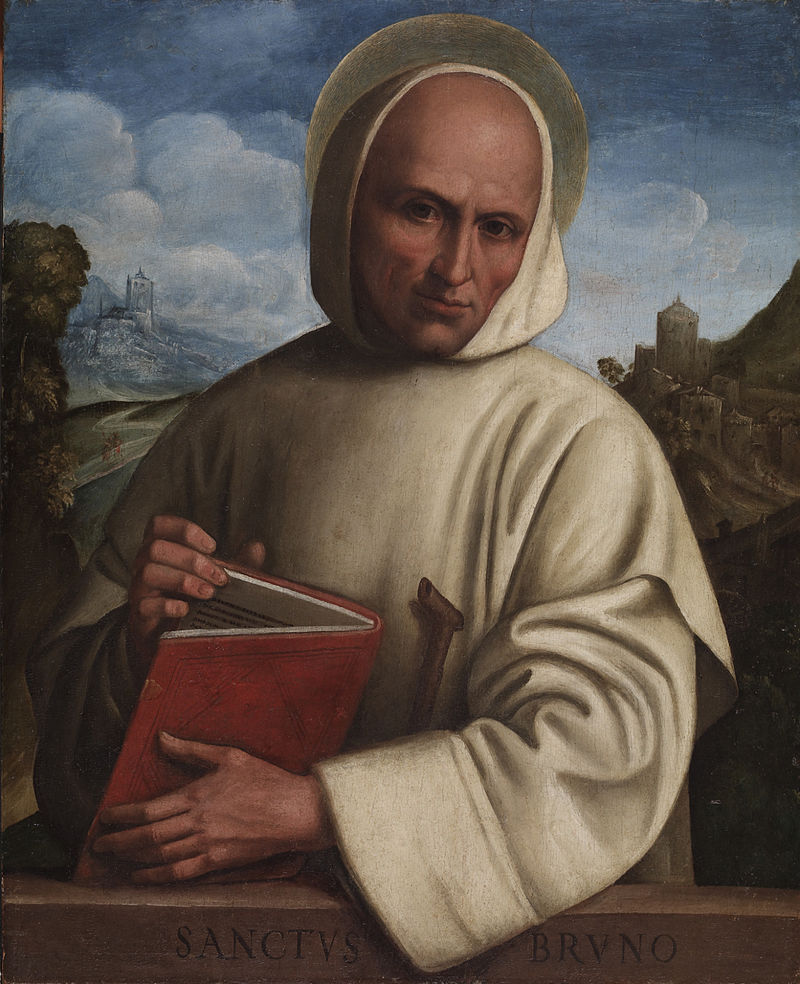Text and Illustrations from The Saint Andrew Daily Missal,
unless otherwise stated.
The Most Holy Rosary of The Blessed Virgin Mary.
Feast Day 7 October.
Feast Day 7 October.
Double of The Second-Class.
It was the custom in The Middle Ages, as formerly among the Romans, for noble personages to wear Crowns of Flowers, called "Chaplets". These Crowns were offered to persons of distinction, as a Feudal Due.
The Blessed Virgin, as Queen of Heaven, and of Souls, has a right to the same homage. Therefore, The Church asks us to recognise the Title of Mary as Queen of The Holy Rosary, and she exhorts us to to offer to her, as Daughter of The Father, Mother of The Son, and Spouse of The Holy Ghost, a Triple Chaplet, or Three Crowns of Roses, of which she shows us all the beauties in today's Office, and to which she has given the name of "Rosary".
The Collect reminds us that the recitation of The Rosary is a mental Prayer, in which we meditate on The Mysteries of The Life, Death, and Resurrection, of Jesus; with these, Mary was intimately associated.
The Gospel, which gives us the chief part of the Angelic Salutation, shows us that The Rosary is a vocal Prayer. The Pater, Credo, and Gloria, which are recited with the Ave Marias, are also found in The Mass or in The Divine Office.
The Rosary, as a private Devotion, consists therefore of elements taken from The Liturgical Cycle, and The Feast of The Rosary forms part of The Cycle.
This Prayer has, in the course of the Centuries, obtained many Graces for Christendom. The Feast of Our Lady of The Rosary was instituted to Commemorate the Victory of Lepanto (Sunday, 7 October 1571), when, thanks to the recitation of The Rosary, the forces of Islam, which threatened to invade Europe, were broken. Pope Gregory XIII, in 1573, prescribed this Feast, replacing very significantly The Feast of Our Lady of Victory, for certain Churches; it was extended to the Catholic World by Pope Clement XI, in thanksgiving for another triumph over the same foes in Hungary in 1716, under the Holy Roman Emperor, Charles VI.

The Feast of The Most Holy Rosary is a summary of The Liturgical Year, as we meditate on The Mysteries, and also of The Breviary, as we recite one hundred and fifty Ave Marias, corresponding to one hundred and fifty Psalms, ending with Gloria Patri.
It shows, in an admirable Triptych, the Joyful, Sorrowful, and Glorious events in the lives of Jesus and Mary, which are recalled in succession in The Catholic Calendar.
In The Christmas Cycle, the Soul, plunged in an atmosphere of Joy, meditates on The Five Joyful Mysteries, on Wednesdays and Fridays of Ember Week in Winter, on Christmas Day, on 2 February (The Purification of The Blessed Virgin Mary) and on The Sunday in The Octave of The Epiphany.
Again, she Contemplates, during The Season of The Passion, The Five Sorrowful Mysteries, on Holy Thursday and Good Friday.
Lastly, she sympathises, amid the Joys of The Paschal Season and Pentecost, with The Five Glorious Mysteries at The Feasts of Easter, Ascension, Pentecost and The Assumption of The Virgin. There is a Plenary Indulgence, similar to that of the Portiuncula, to be gained on The Day of this Feast by all The Faithful, who visit a Church where the Arch-Confraternity of The Rosary is established.
Blessed Pope Leo XIII, moved by the sorrowful trials under which The Church groans, raised the Feast to one of The Second Class, with a new Mass and Office.
Mass: Gaudeámus omnes in Dómino.
Commemoration at Low Mass of Saint Mark and Saints Sergius and Companions.

THE SAINT ANDREW DAILY MISSAL



Mass: Gaudeámus omnes in Dómino.
Commemoration at Low Mass of Saint Mark and Saints Sergius and Companions.

THE SAINT ANDREW DAILY MISSAL
THE SAINT ANDREW DAILY MISSAL
Available (in U.K.) from
Available (in U.S.A.) from

















